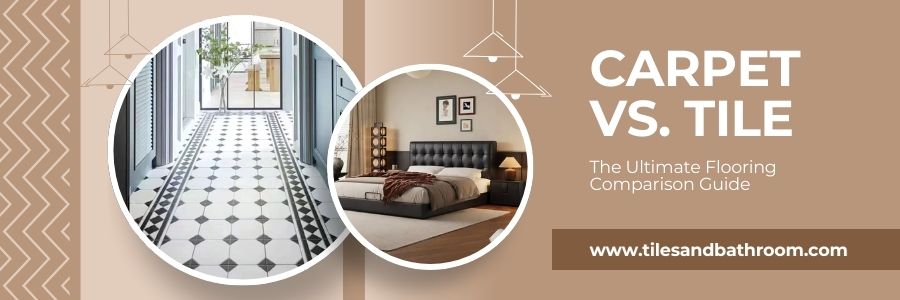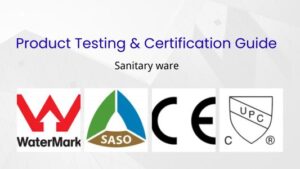Hello there! As someone who has supplied quality ceramic and porcelain tiles from China for over 15 years, I’ve had countless conversations with importers and distributors about flooring choices. One question that comes up frequently is: “How does tile compare to carpet?”
This guide will help you understand the key differences between these two popular flooring options so you can make informed decisions for your import business and better advise your customers.
What’s Happening in the Global Flooring Market?
The flooring market continues to evolve based on regional preferences and practical considerations:
- Carpet remains popular in North America, the UK, and Northern Europe, especially in residential settings
- Tile dominates in Southern Europe, Asia, the Middle East, Africa, and Latin America
- Commercial sectors worldwide are increasingly shifting toward hard surface flooring like tile
For importers, it’s worth noting that while carpet has traditionally held strong market share in certain regions, the global trend is moving toward hard surfaces, with tile seeing consistent growth year over year.
How Do Tile and Carpet Differ in Composition and Production?
Understanding what goes into these materials helps explain their performance differences:
| Aspect | Carpet | Ceramic/Porcelain Tile |
|---|---|---|
| Main Materials | Synthetic fibers (nylon, polyester, olefin) or natural fibers (wool) | Clay, sand, and natural minerals |
| Manufacturing Process | Fibers tufted into backing material | Raw materials pressed and fired at high temperatures |
| Typical Thickness | 6-15mm (including padding) | 8-12mm |
| Visual Variety | Limited to fiber colors and patterns | Unlimited – can mimic any material or design |
As a tile supplier, I can confidently say that advanced manufacturing technology has dramatically expanded the design possibilities for ceramicand porcelain tile, allowing us to create products that look like anything from natural stone to fabric textures.
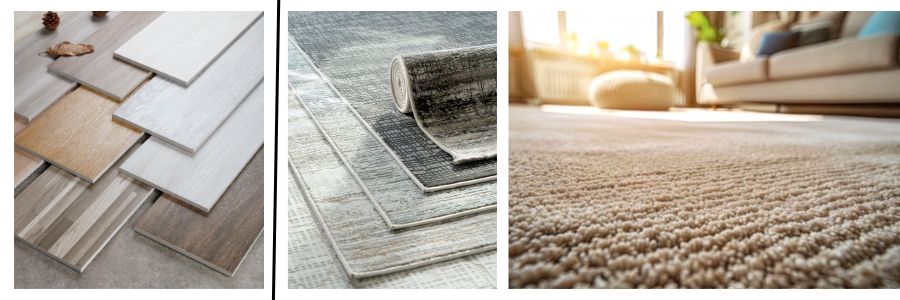

Which Option Performs Better in Different Environments?
How Do They Handle Moisture?
- Carpet:
- Absorbs moisture and can develop mold and mildew
- Requires professional cleaning when wet
- Not recommended for bathrooms, kitchens, or humid climates
- Tile:
- 100% waterproof
- Prevents moisture from reaching subfloor
- Ideal for any area with water exposure
- Perfect for humid climates
What About Durability and Longevity?
This is where the difference becomes truly dramatic:
- Carpet Lifespan:
- 5-10 years in residential settings
- 3-5 years in commercial areas
- Wears visibly in high-traffic paths
- Stains can be permanent
- Tile Lifespan:
- 30-50+ years when properly installed
- Maintains appearance even in high-traffic areas
- Extremely difficult to damage
- Resistant to stains and fading
For your customers who calculate long-term facility costs, tile’s extended lifespan offers tremendous value despite the higher initial investment.
What Installation Factors Should Importers Consider?
The installation process affects both your customers’ experience and your product recommendations:
Carpet Installation:
- Relatively quick (a bedroom might take 2-3 hours)
- Requires stretching and seaming
- Needs separate padding in most cases
- Limited specialized tools needed
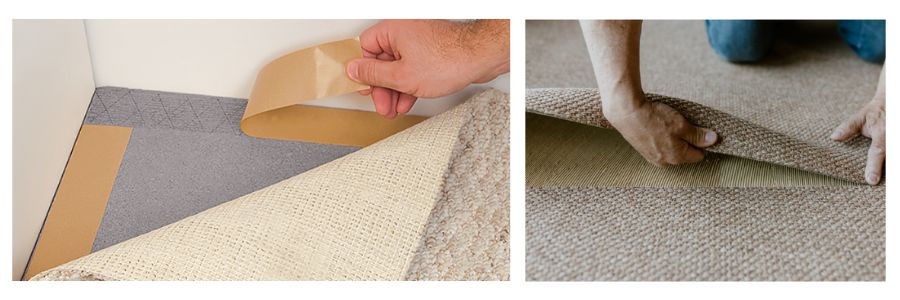

Tile Installation:
- More time-intensive (the same bedroom might take 1-2 days)
- Requires precise subfloor preparation
- Needs specialized cutting tools
- Involves multiple stages (laying, grouting, sealing)
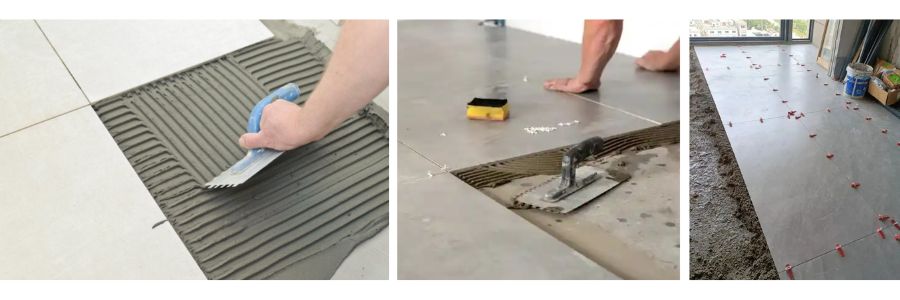

For markets with high labor costs, the more complex installation of tile is an important consideration. However, the significantly longer lifespan offsets this initial disadvantage.
How Do Maintenance Requirements Compare?
Maintenance affects end-user satisfaction and long-term perception of your products:
Carpet Maintenance:
- Regular vacuuming (2-3 times weekly)
- Professional deep cleaning recommended every 12-18 months
- Spot cleaning needed for spills and stains
- May trap allergens and odors despite cleaning
Tile Maintenance:
- Simple sweeping or vacuuming
- Mopping with mild cleaner as needed
- No special treatments required
- Non-porous surface doesn’t harbor allergens or odors
When advising your distribution customers, emphasize that tile’s easy maintenance is a significant selling point for commercial properties and busy households.
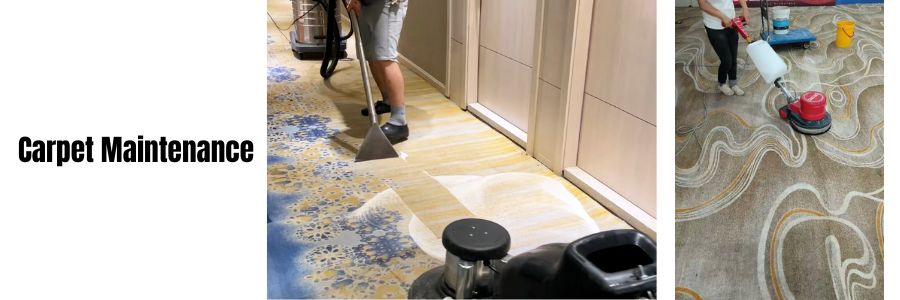

What Are the Health and Indoor Air Quality Implications?
Modern consumers increasingly prioritize healthy living environments:
Carpet Health Considerations:
- Traps dust, pet dander, and allergens
- Can harbor dust mites
- May retain chemicals from cleaning products
- Some new carpets emit VOCs (volatile organic compounds)
Tile Health Considerations:
- Non-porous surface doesn’t harbor allergens
- Doesn’t support mold or bacteria growth
- No VOC emissions after installation
- Can be cleaned with gentle, non-toxic products
For markets where health considerations drive purchasing decisions, ceramic tile offers clear advantages worth highlighting in your marketing materials.
How Do Environmental Impacts Compare?
Sustainability has become a crucial factor in flooring selection:
Carpet Environmental Impact:
- Made primarily from petroleum-based materials
- Average lifespan of 5-10 years means more frequent replacement
- Difficult to recycle completely
- Millions of tons end up in landfills annually
Tile Environmental Impact:
- Made from abundant natural materials
- Extremely long lifespan reduces replacement waste
- Energy-intensive production process is offset by longevity
- Can be crushed and recycled at end of life
Our factory has implemented energy-efficient kilns that reduce the carbon footprint of our tiles by up to 30% compared to older production methods, making our products increasingly eco-friendly.
What About Comfort and Acoustics?
Physical comfort and sound management affect different market segments:
Carpet Comfort and Sound:
- Soft and warm underfoot
- Provides cushioning
- Excellent sound absorption
- Reduces echo and impact noise
Tile Comfort and Sound:
- Harder and cooler underfoot
- No inherent cushioning
- Reflects sound rather than absorbs it
- Can be louder without area rugs
For residential markets in colder climates, carpet’s warmth remains a selling point. However, advances in underfloor heating systems make tile an increasingly viable alternative that combines comfort with superior durability.
How Do Import Logistics Compare?
As an importer, these practical shipping considerations will affect your operations:
Carpet Import Considerations:
- Bulky but relatively lightweight
- Can be rolled for efficient shipping
- Less fragile during transport
- Typically requires climate-controlled storage
Tile Import Considerations:
- Heavier weight affects shipping costs
- Requires careful packaging to prevent breakage
- Not affected by humidity during transport
- No special storage requirements
Which Markets and Customers Prefer Each Option?
Different customer segments have distinct preferences:
Carpet Appeals To:
- Residential customers in cold climates
- Budget-conscious consumers (initially)
- Spaces where sound dampening is crucial
- Customers who prioritize softness underfoot
- Shorter-term housing and rental market renovations
Tile Appeals To:
- Luxury and premium market segments
- Hot climate regions
- Commercial and high-traffic applications
- Health-conscious consumers
- Long-term property investments
- Customers with pets or allergies
By understanding these preferences, you can tailor your import strategy to specific market segments and position tile as the premium, long-lasting option.
What Marketing Strategies Work Best for Each Product?
Based on my experience with successful importers, here are effective approaches:
For Carpet:
- Emphasize comfort and warmth
- Focus on initial affordability
- Showcase sound-dampening benefits
- Highlight quick installation
For Tile:
- Emphasize lifetime value and reduced total cost of ownership
- Create striking visual displays showing design versatility
- Educate on health and hygiene benefits
- Demonstrate return on investment for property value
- Highlight technological advancements in designs and textures
Conclusion
Both carpet and tile serve important segments of the flooring market. As a Chinese tile supplier, I firmly believe that ceramic and porcelain tiles offer superior value, particularly for:
- Commercial and hospitality projects
- Premium residential developments
- Hot climate regions
- Health-conscious markets
- Properties focused on long-term value
However, carpet serves important niches where immediate comfort and lower initial cost are prioritized over longevity.
The most successful importers I work with maintain a strategic mix of both products, positioning tile as their premium, higher-margin offering while using carpet to serve more price-sensitive market segments.
Want to learn about how other flooring options compare? Check out our other comparison guides:
- Tile vs Wood Flooring: Pros, Cons and Market Opportunity
- Tile vs Vinyl Flooring: Which Offers Better ROI for Importers?
- The Battle of Tiles: Porcelain vs Marble
Ready to expand your flooring with premium Chinese tiles? Contact us today for wholesale pricing and customization options.

